Research July 23, 2020
What Happens When Oil Spills into a Freshwater Lake?
By Sumeep Bath, Communications Manager
This is an important question one that we are continually working to discover more comprehensive answers for, especially when it comes to fresh water.
With approximately 840,000 kilometres (km) of oil and gas pipelines in Canada and 3.9 million km in the United States, we can always learn more about what occurs should one of those pipelines or rail cars leak into nearby freshwater lakes, wetlands, ponds, rivers, and creeks, and how the wildlife that depend on them may be affected.
Back in 2018, a group of scientists headed by Jules Blais (University of Ottawa), Diane Orihel (Queen’s University), and Mark Hanson (University of Manitoba) set out to learn more about that question.
They spent that summer setting up a series of enclosures (“limnocorrals”) in a real lake at IISD Experimental Lakes Area, and carefully introduced some oil into them to simulate seven oil spills into a freshwater lake, for a project named the “Boreal Oil Release Experiment by Additions to Limnocorrals,” or simply BOREAL.
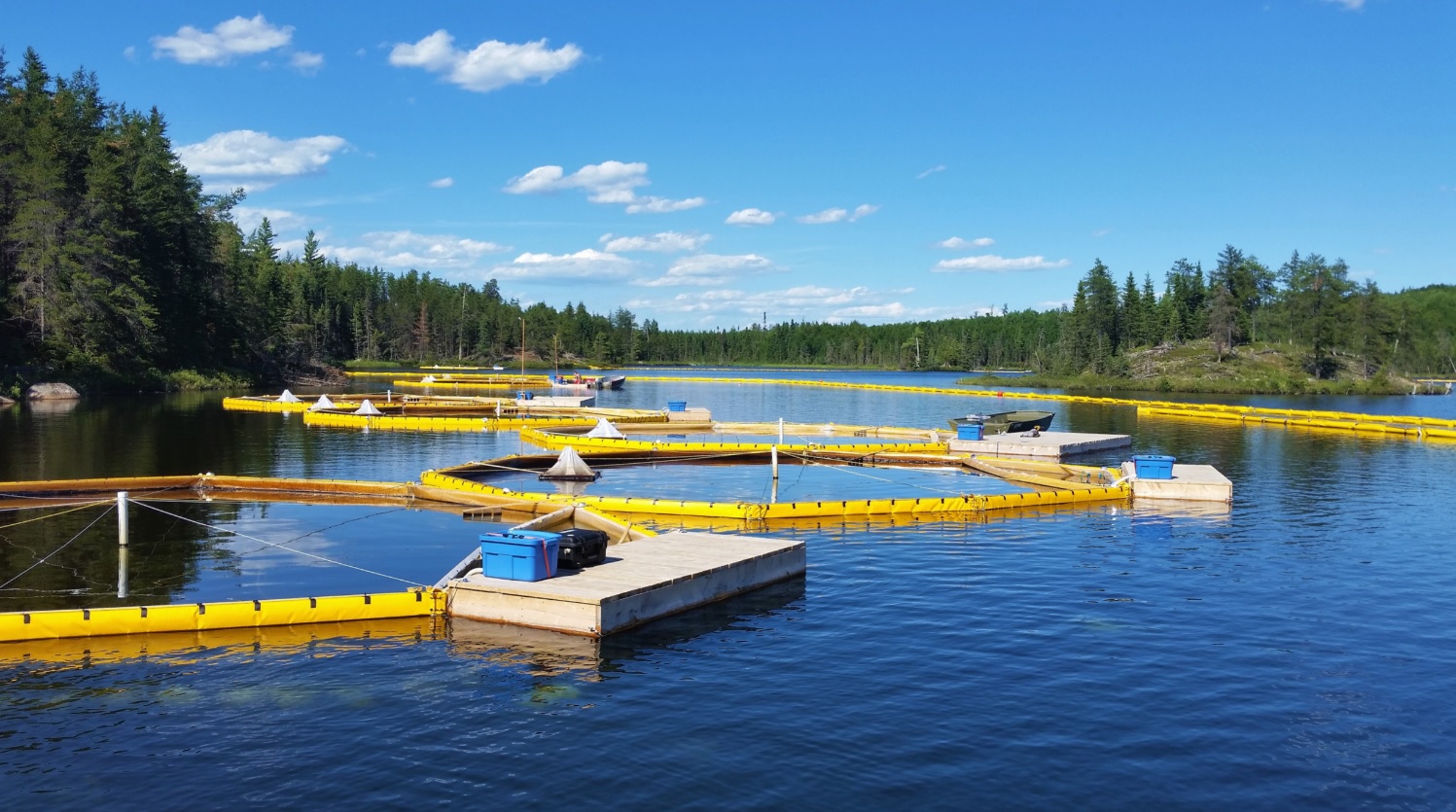
Think of a limnocorral as a model aquatic ecosystem, or even a mini lake. In this instance, they represent a vertical slice of the lake ecosystem—and capture many naturally-occurring factors in a lake, such as weather, sunlight and wave movement, as well as the relationships between different levels of the food webs that cannot be replicated in a laboratory.
These securely-fastened enclosures were the perfect setting for a project to explore how oil influences everything from light and temperature in the water to microbial and fish populations—ranging from the cellular and organism levels to the community level.
And this is the exciting potential of the IISD Experimental Lakes Area model—you can measure the state of the lake before any experimentation begins, and once you have safely manipulated the lake, you can measure all the different components of the lake (from water chemistry and temperature to relationships between different levels of a food web), and see how they change.
For BOREAL, the researchers simulated small and large spills of diluted bitumen (or dilbit)—the form of petroleum in which oil travels through many pipelines. Over the next several months, their team of scientists including many students and postdocs continually monitored each limnocorral to see how it responded to the spill, bringing samples back to the lab after each visit to analyze the results.
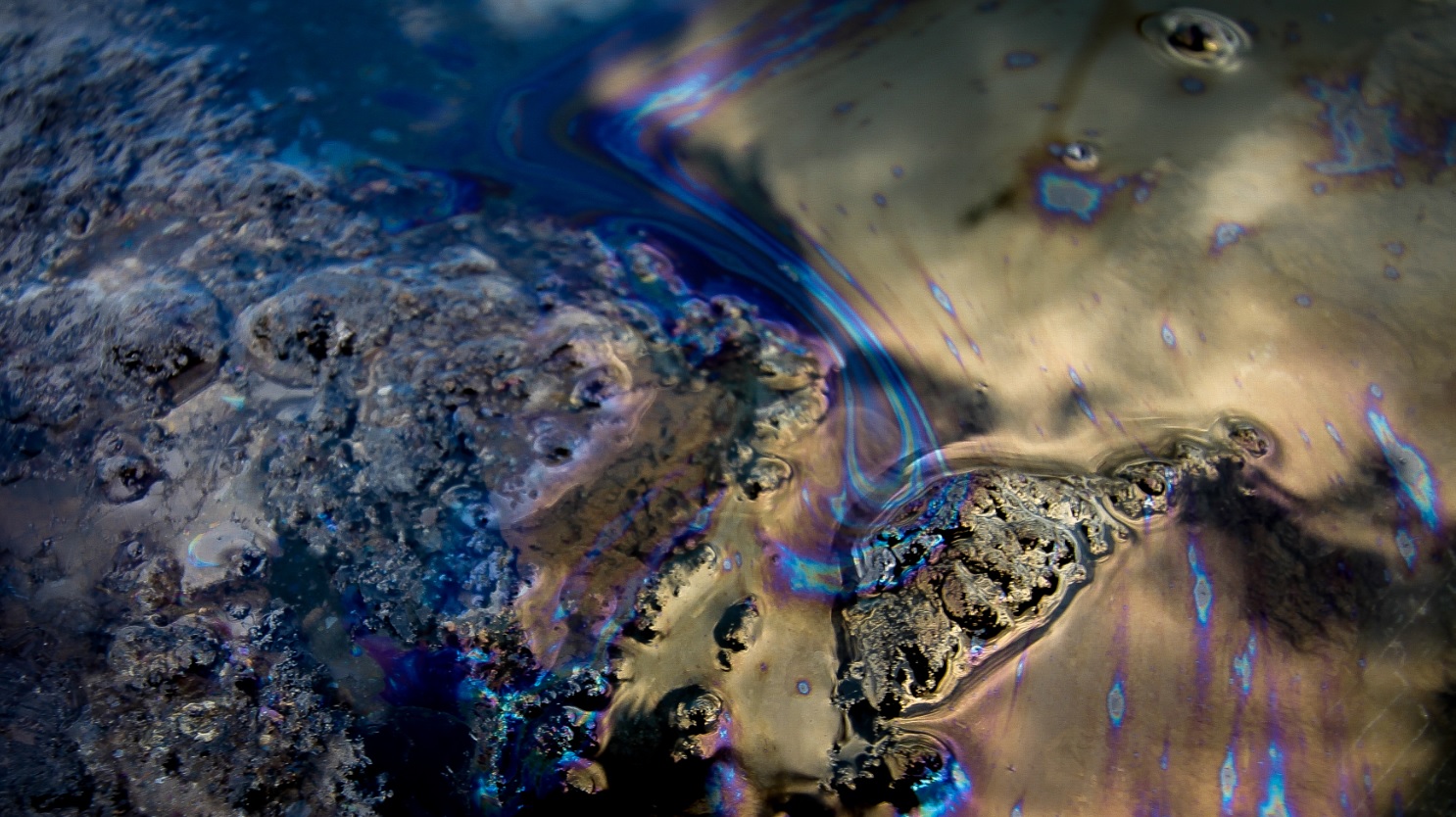
The results are still filtering in and making their way through the academic publishing process, but some striking preliminary findings from an early pilot-scale study conducted in 2017 are already starting to emerge.
- The first discovery involved the fate of the dilbit within the water column. Within the first 24 hours, the volatile hydrocarbons quickly evaporated from the dilbit, making it much denser. The dilbit also became much thicker in the water, giving it the consistency of molasses. These changes resulted in the dilbit sinking to the bottom after eight days, following a heavy rainfall. These studies allowed scientists to better predict how dilbit behaves in lake water, and how long it takes for dilbit to sink, information critical to those who respond to and clean up spills. You can read more about the behaviour of dilbit once it spills into fresh water here.
- The next discovery involved phytoplankton (those autotrophic, or self-feeding, components of the plankton community that exist at the lower rungs of the food web) and zooplankton (small organisms that feed on phytoplankton). Both were greatly affected by the oil exposure. In fact, their overall amounts were 70% lower than a community not exposed to oil. However, not all species responded the same way. Interestingly, many phytoplankton showed some signs of recovery within 2 weeks after an oil spill. You can learn more about the impact of oil spills on phytoplankton and zooplankton populations here.
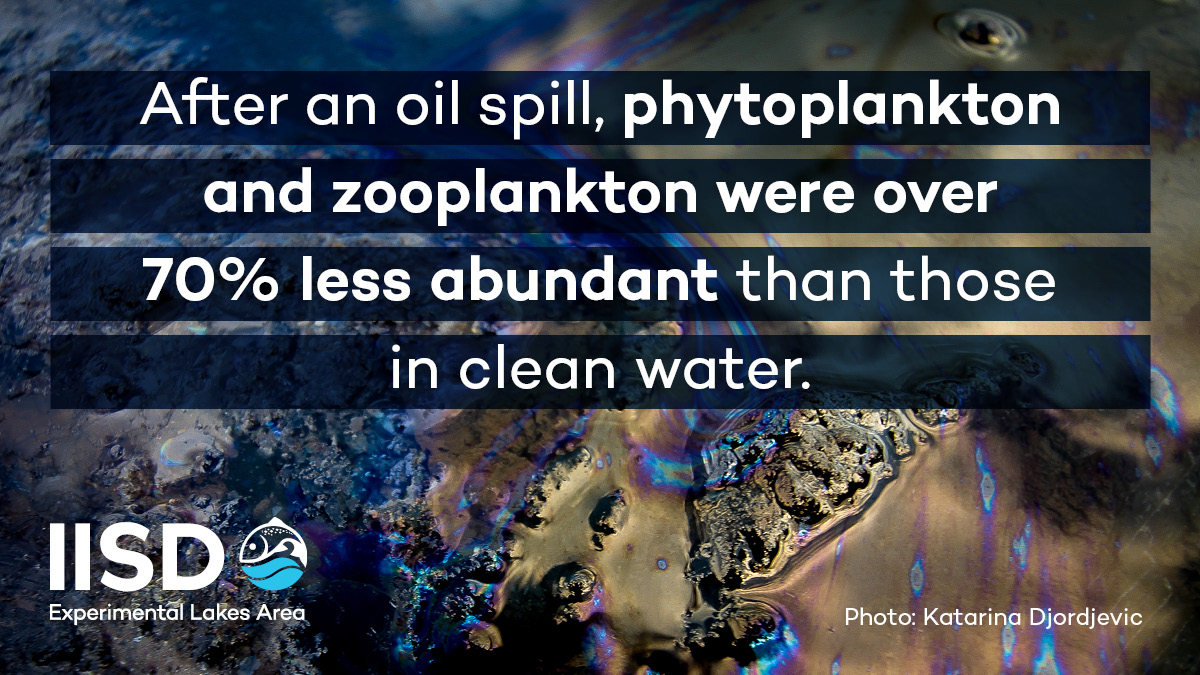
- On the other hand, some bacteria seemed to benefit from the oil spill, and their populations increased substantially. For the most part, the bacteria whose populations benefited from the introduction of diluted bitumen are those that are known to breakdown hydrocarbons—a key component of the crude oil that was added into the limnocorrals. You can learn more about the impact of oil spills on bacterial populations here.
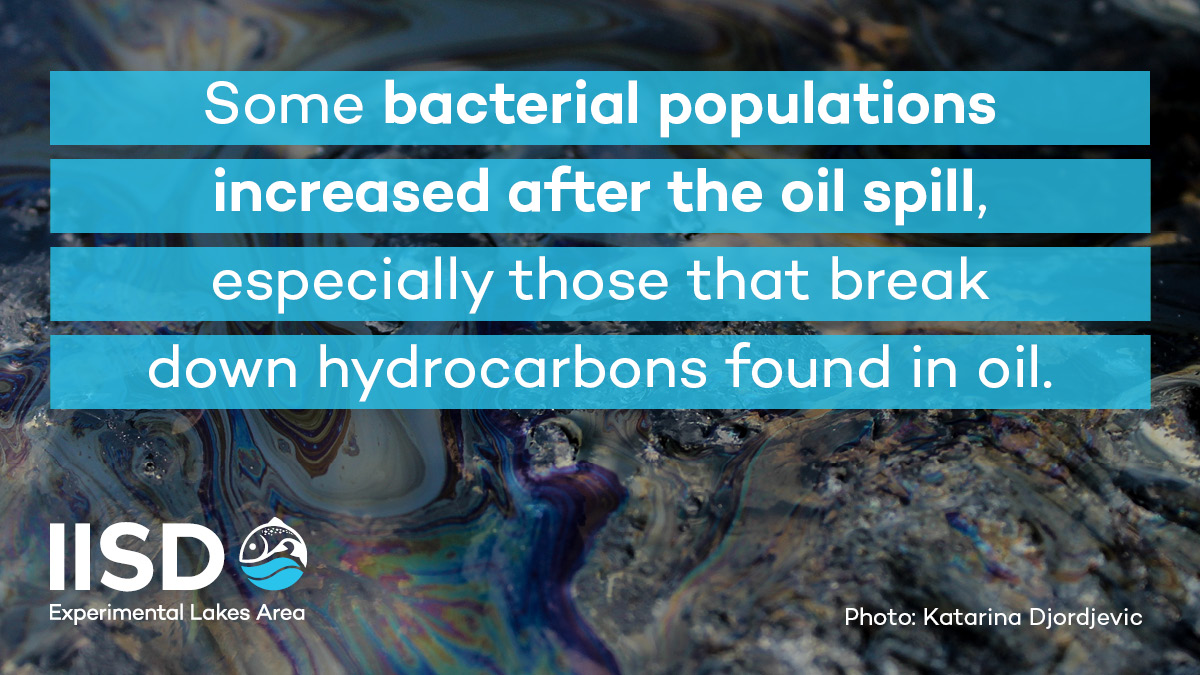
- Bacteria,
phytoplankton, and zooplankton all exist in the lower levels of food webs, and the
higher levels (such as fish, amphibians, and even birds) depend on them for
sustenance and growth. It is likely, therefore, that a change in bacteria,
phytoplankton, and zooplankton populations will represent a considerable
change to the rest of the food web. The researchers are still
exploring those impacts.
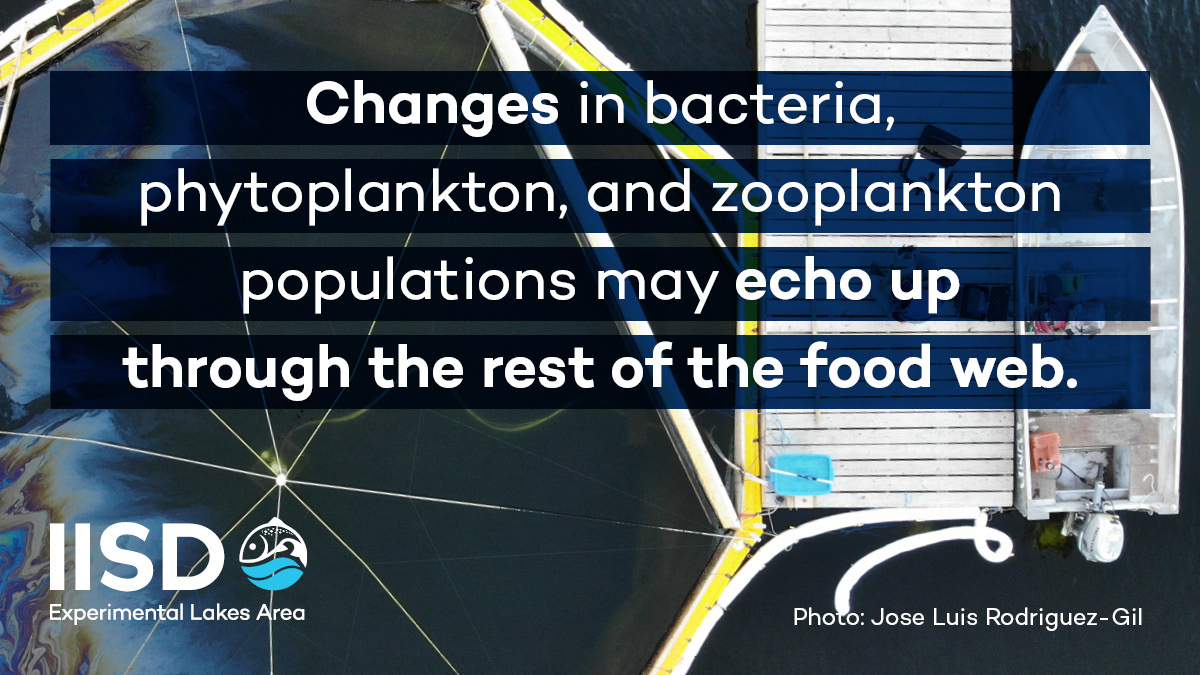
Several studies are currently being (and have been) pursued at IISD-ELA to address public and regulatory concerns regarding potential environmental effects of oil spills and uncertainty regarding the best cleanup methods following a spill, especially for freshwater environments. One study, led by Jules Blais (University of Ottawa), Mark Hanson (University of Manitoba) and Diane Orihel (Queen’s University) examined the ecological impacts of contained diluted bitumen model spills in a freshwater boreal lake. A companion study, led by Vince Palace (IISD-ELA) compared the effectiveness of different methods for cleaning spilled oil from shorelines. Both studies are part of a large multidisciplinary program that includes participation from governments (Environment and Climate Change Canada; Fisheries and Oceans Canada; Natural Resources Canada; National Research Council of Canada; Ontario Municipal Employees Coordinating Committee; Ontario Ministry of Natural Resources and Forestry), regulators (National Energy Board), academic partners (universities of Manitoba, Ottawa, Queen’s, Institut national de la recherche scientifique, Calgary, Saskatchewan, McGill) and industry (Canadian Association of Petroleum Producers, Canadian Energy Pipelines Association).
For more information, please contact Sumeep Bath at sbath@iisd.ca.
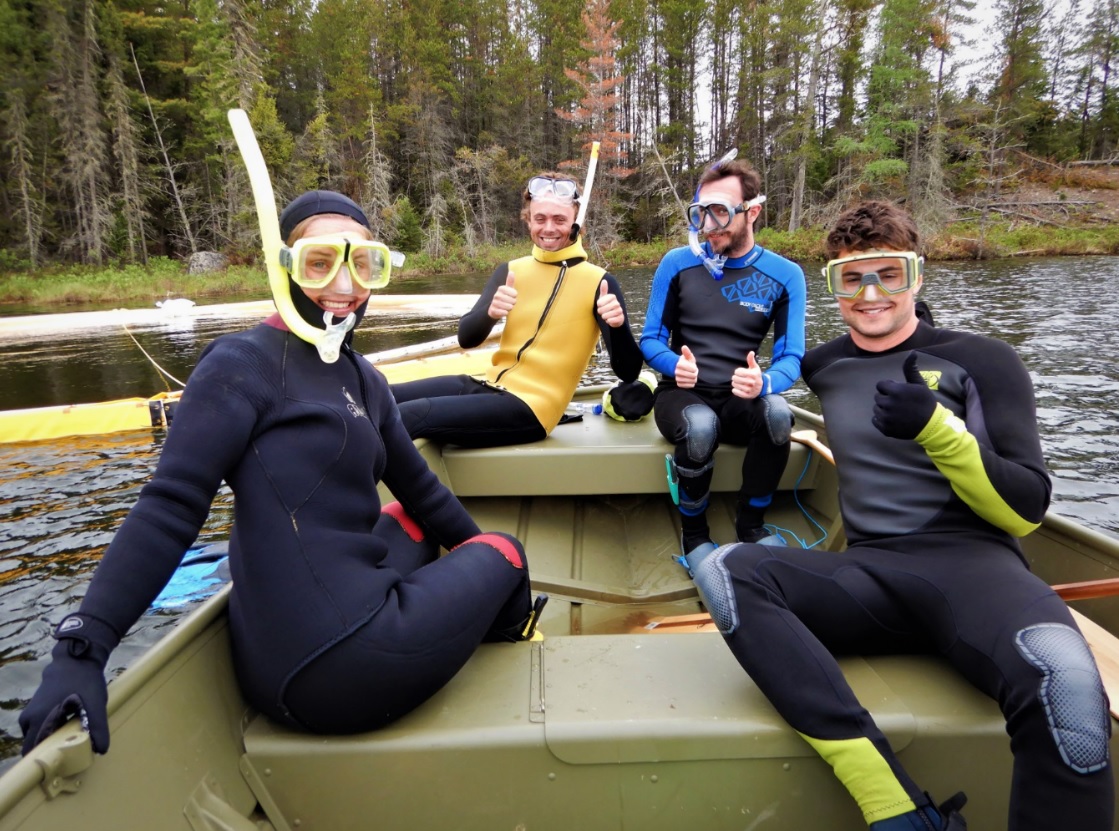
You know that ground-breaking freshwater research you just read about? Well, that’s actually down to you.
It’s only thanks to our generous donors that the world’s freshwater laboratory—an independent not-for-profit—can continue to do what we do. And that means everything from explore what happens when cannabis flushes and oil spills into a lake, to how we can reduce mercury in fish and algal blooms in fresh water—all to keep our water clean around the world for generations to come.
We know that these are difficult times, but the knowledge to act on scientific evidence has never been more important. Neither has your support.
If you believe in whole ecosystem science and using it to bring about real change to fresh water around the globe, please support us in any way you are able to.